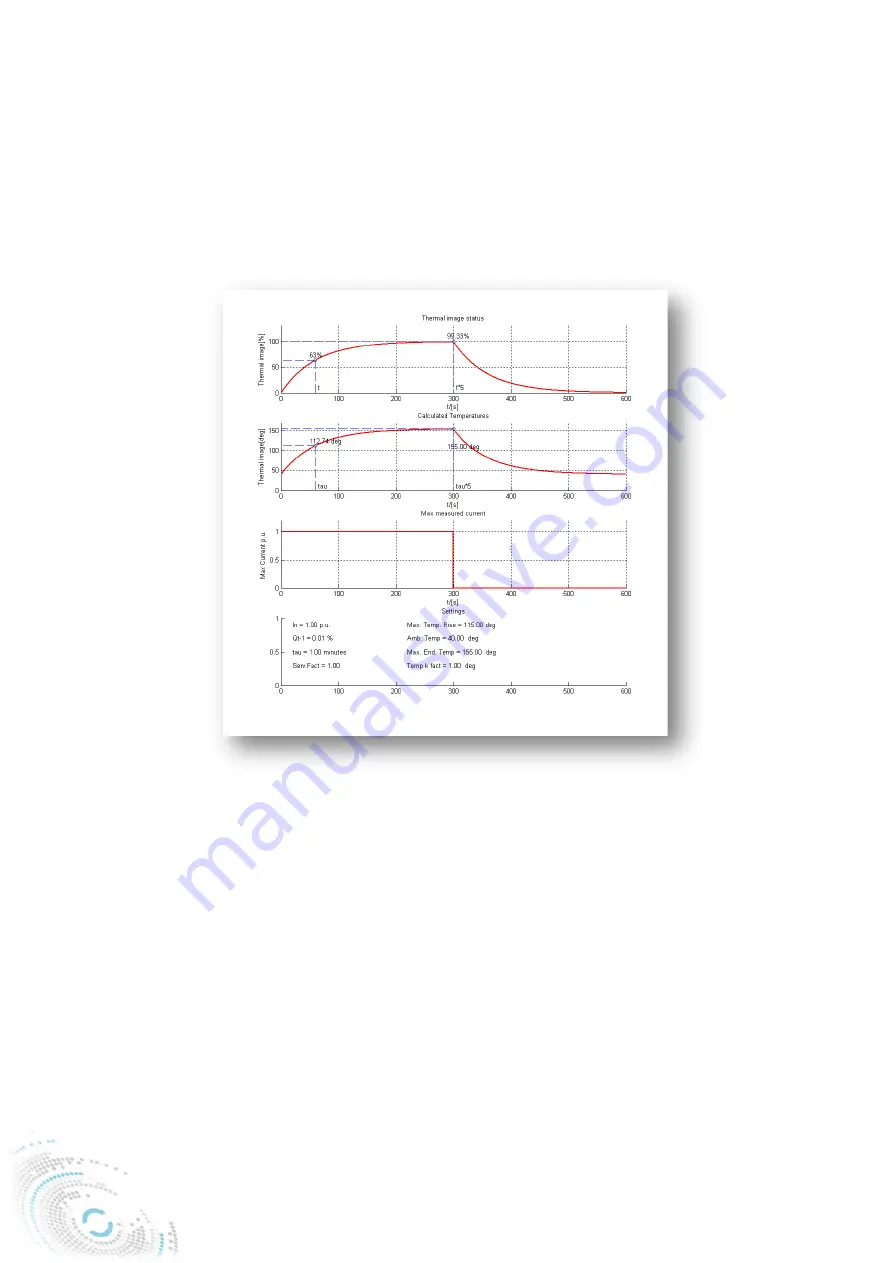
Application Guide - NP900 Series
127 (504
)
A996A
its heating constant tau (
τ
), 63% of the nominal thermal capacity is used. When the
loading continues until five times this given constant the used thermal capacity indefinitely
approaches to 100% but never exceeds it. With a single time constant model cooling of
the object follows this same behavior reversible to the heating when the current feeding is
completely zero.
Figure 3.2.11-65 Thermal image calculation with nominal conditions, example.
This described behavior is based into that assumption that the monitored object, whether
cable, line or electrical device has a homogenous body which is generating and
dissipating heat with a rate which is proportional to temperature rise caused by current
squared. This usually is the case with cables and objects while overhead lines heat
dissipation is dependent of current weather conditions. Weather conditions considering
the prevailing conditions in the thermal replica are compensated with ambient temperature
coefficient which is constantly calculated and changing when using RTD sensor for the
measurement. When the ambient temperature of the protected object is stable it can be
set manually (e.g. in case of ground dug cables).
Ambient temperature compensation takes into account the set minimum and maximum
temperature and load capacity of the protected object and measured or set ambient






























